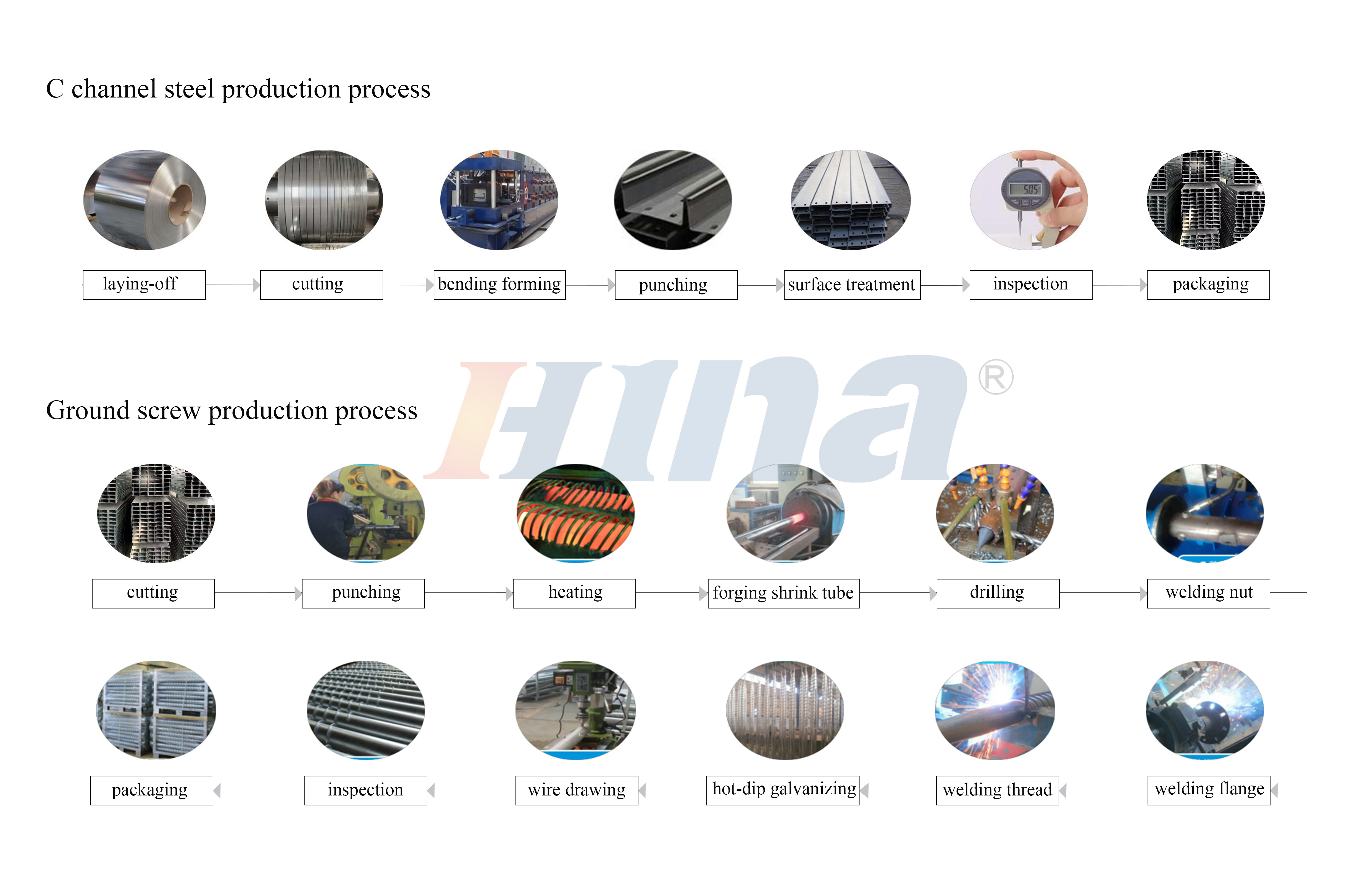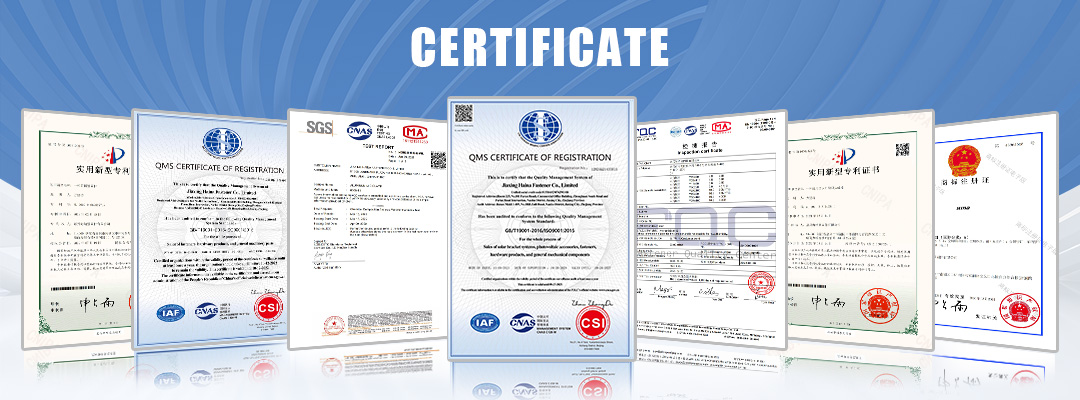- All
- Product Name
- Product Keyword
- Product Model
- Product Summary
- Product Description
- Multi Field Search
| Availability: | |
|---|---|
| Quantity: | |






customized
HINA
HINA2024122705
The application of Trapezoidal aluminum rail in solar mounting systems is mainly for supporting and securing solar photovoltaic panels. Due to its lightweight, high strength, and corrosion-resistant properties, this trapezoidal aluminum rail plays an important role in solar photovoltaic systems, especially in solar mounting structures on rooftops, ground installations, and other mounting locations.

Corrosion Resistance: Trapezoidal aluminum rails are made from materials that offer excellent corrosion resistance, making them particularly suitable for outdoor environments. They can withstand weather conditions like rain, wind, sand, and UV exposure, thus extending the system's lifespan.
High Structural Strength: The trapezoidal cross-section design allows the aluminum rail to remain stable under heavy loads. It effectively supports solar panels, ensuring system stability, which is especially important in areas with strong winds.
Lightweight: The aluminum alloy material is relatively lightweight, making the installation process more convenient while reducing transportation and installation costs.
Easy Installation: Due to the flexibility and adjustability of trapezoidal aluminum rails, they can be compatible with different types and sizes of mounting systems, simplifying the installation process.
Strong Wind Resistance: The structure of the trapezoidal aluminum rail helps optimize aerodynamics, reducing the impact of wind on the solar panels, which is especially advantageous in high-wind areas.
Rooftop Solar Systems: In rooftop solar power systems, trapezoidal aluminum rails are used to secure and support solar panels, ensuring their stable installation while withstanding external wind forces and climate changes.
Ground-Mounted Solar Racking: In large ground-mounted solar power plants, trapezoidal aluminum rails are part of the racking structure, providing robust support to ensure that solar panels can receive sunlight effectively at different angles.
Tracking Mounting Systems: Some advanced solar tracking systems use trapezoidal aluminum rails as part of the support framework, helping solar panels adjust their angle to follow the sun’s movement, thereby increasing the efficiency of the photovoltaic system.
Haina is committed to providing customers with high-quality stainless steel standard fasteners and professional services to meet various engineering needs. We have a large amount of spot inventory to ensure fast delivery and save you waiting time. In addition, we provide the following value-added services to help your purchasing experience:
1. Free samples: provide samples for customer testing.
2. 3.1 Test report: quality test report that meets international standards.
3. Video factory inspection: support video factory inspection to demonstrate production process and quality management.
Advantages
- Sufficient inventory: quick response to order requirements.
- Quality assurance: strict quality control to ensure product reliability.
Haina is committed to providing efficient and high-quality fastener services.

What is a trapezoidal aluminum rail?
A trapezoidal aluminum rail is an aluminum alloy rail with a trapezoidal cross-section, commonly used in solar mounting systems. Its unique trapezoidal design provides stronger support and stability, making it suitable for various solar panel mounting configurations.
What types of solar systems are trapezoidal aluminum rails suitable for?
Trapezoidal aluminum rails are suitable for solar systems of various sizes, especially in commercial and industrial applications that require stronger support. Due to their higher load-bearing capacity, they are often used to mount larger or heavier solar panels.
How much more expensive is ground mount solar?
Ground-mount solar systems are generally more expensive than roof-mount solar. The higher cost varies based on a number of factors, such as site preparation, land costs, etc. Generally speaking, it can be around 20% to 30% higher. But the exact price difference depends on the size of the project, geographic location, and other specific conditions.
The application of Trapezoidal aluminum rail in solar mounting systems is mainly for supporting and securing solar photovoltaic panels. Due to its lightweight, high strength, and corrosion-resistant properties, this trapezoidal aluminum rail plays an important role in solar photovoltaic systems, especially in solar mounting structures on rooftops, ground installations, and other mounting locations.

Corrosion Resistance: Trapezoidal aluminum rails are made from materials that offer excellent corrosion resistance, making them particularly suitable for outdoor environments. They can withstand weather conditions like rain, wind, sand, and UV exposure, thus extending the system's lifespan.
High Structural Strength: The trapezoidal cross-section design allows the aluminum rail to remain stable under heavy loads. It effectively supports solar panels, ensuring system stability, which is especially important in areas with strong winds.
Lightweight: The aluminum alloy material is relatively lightweight, making the installation process more convenient while reducing transportation and installation costs.
Easy Installation: Due to the flexibility and adjustability of trapezoidal aluminum rails, they can be compatible with different types and sizes of mounting systems, simplifying the installation process.
Strong Wind Resistance: The structure of the trapezoidal aluminum rail helps optimize aerodynamics, reducing the impact of wind on the solar panels, which is especially advantageous in high-wind areas.
Rooftop Solar Systems: In rooftop solar power systems, trapezoidal aluminum rails are used to secure and support solar panels, ensuring their stable installation while withstanding external wind forces and climate changes.
Ground-Mounted Solar Racking: In large ground-mounted solar power plants, trapezoidal aluminum rails are part of the racking structure, providing robust support to ensure that solar panels can receive sunlight effectively at different angles.
Tracking Mounting Systems: Some advanced solar tracking systems use trapezoidal aluminum rails as part of the support framework, helping solar panels adjust their angle to follow the sun’s movement, thereby increasing the efficiency of the photovoltaic system.
Haina is committed to providing customers with high-quality stainless steel standard fasteners and professional services to meet various engineering needs. We have a large amount of spot inventory to ensure fast delivery and save you waiting time. In addition, we provide the following value-added services to help your purchasing experience:
1. Free samples: provide samples for customer testing.
2. 3.1 Test report: quality test report that meets international standards.
3. Video factory inspection: support video factory inspection to demonstrate production process and quality management.
Advantages
- Sufficient inventory: quick response to order requirements.
- Quality assurance: strict quality control to ensure product reliability.
Haina is committed to providing efficient and high-quality fastener services.

What is a trapezoidal aluminum rail?
A trapezoidal aluminum rail is an aluminum alloy rail with a trapezoidal cross-section, commonly used in solar mounting systems. Its unique trapezoidal design provides stronger support and stability, making it suitable for various solar panel mounting configurations.
What types of solar systems are trapezoidal aluminum rails suitable for?
Trapezoidal aluminum rails are suitable for solar systems of various sizes, especially in commercial and industrial applications that require stronger support. Due to their higher load-bearing capacity, they are often used to mount larger or heavier solar panels.
How much more expensive is ground mount solar?
Ground-mount solar systems are generally more expensive than roof-mount solar. The higher cost varies based on a number of factors, such as site preparation, land costs, etc. Generally speaking, it can be around 20% to 30% higher. But the exact price difference depends on the size of the project, geographic location, and other specific conditions.